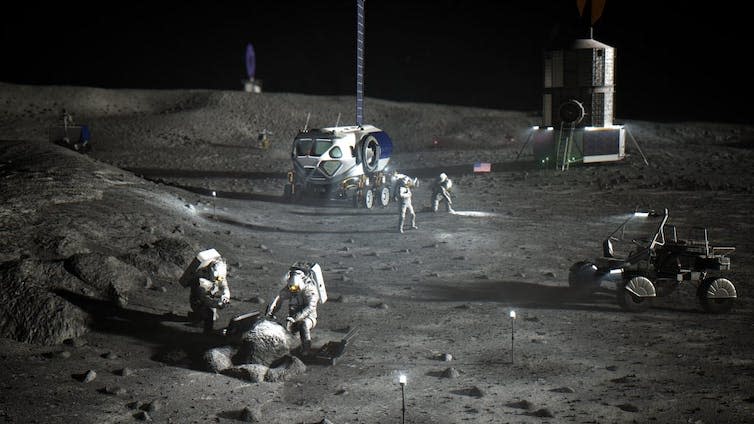The 2019 Time magazine cover depicted four astronauts running towards the Moon. In the photo next to the headline “The Next Space Race,” one astronaut was carrying an American flag, one was carrying a Chinese flag, and the other two belonged to space companies owned by billionaires: Elon Musk’s SpaceX and Jeff Bezos’ Blue Origin.
Until recently, it looked like the United States and SpaceX were poised to win the race to return to the Moon with NASA’s Artemis program. However, a number of setbacks brought this into question. Blue Origin, China and other countries and companies are also continuing their own lunar studies.
On January 9, 2024, NASA announced that it was postponing the Artemis 2 mission, the first manned flight of the Space Launch System (SLS), and the Orion capsule being built to send astronauts back into deep space. The flight would slip from late 2024 to September 2025. This was due to some security issues in Orion that needed to be fixed.
As a result, Artemis 3, which is expected to make the first manned Moon landing since 1972, will not occur before September 2026. Artemis 3 will use SpaceX’s Starship orbiter as the lander for two crew members. This mission was designed to place the first woman and first black person on the lunar surface.
The fact that a non-American crew member could also walk on the Moon by 2030 underscores the fact that NASA is recruiting international partners to the Artemis initiative. So far, only 12 people have set foot on the Moon. They were all men, and they were all Americans.

However, there were problems with the Starship orbiter, which is vital for these purposes. The second test launch in November 2023, for a rocketship-like orbiter atop its massive booster rocket, was spectacularly destroyed eight minutes and six seconds after liftoff.
It will need to be ready to go by 2026. But before that, SpaceX will need to show that it can refuel in orbit and then land Starship on the Moon without a crew.
But Blue Origin is also working on a lander called Blue Moon. Blue Moon is planned to be used as a lunar landing vehicle for the Artemis 5 and 6 missions in 2029 and 2030.
Time will tell which lander may be ready for use first. But competition is always a good stimulus and can accelerate success.
Commercial companies supporting NASA in the Artemis program will need to be very careful about what they do and when. Missions must proceed in a safe and sustainable manner as crew members’ lives are at stake here.
As with Apollo, NASA seeks to use the program to inspire future generations of scientists, engineers and mathematicians. Baby Boomers like me take great pride in being “Apollo children” who were inspired to study scientific subjects by these significant achievements, especially the first steps into another world seen on black-and-white television in July 1969.
International Competition
China is also preparing to develop a lunar base for humans, called the International Lunar Research Station (ILRS), along with many other countries, including Russia. Beijing and its partners will include private sector players, public and non-governmental organizations with the first-ever organizational chart.
The first human missions of the Chinese program to the lunar surface are expected to be carried out in 2030. Among the places they want to land is the south pole of the Moon. NASA also wants to land here, but few of Beijing’s preferences match the locations chosen for Artemis.
The South Pole is a target for both the United States and China because the countries want to extract water ice hidden in craters there. This water could be used for life support on moon bases and to make rocket fuel, helping to reduce the cost of space exploration.
Space programs never happen on time and delays are normal. Space agencies are more cautious these days, even more so than they used to be, because few of the tragedies we’ve experienced in the past force them to think very carefully before sending humans into space.
The safety of the crew is imperative and should always be the first priority. So if that’s the reason we have to wait a little longer for a few humans to walk on the Moon again decades from now, I’m happy to wait.
Going to space is never easy, as the many uncrewed missions to the Moon (both official and commercial) over the last 12 months have shown, without success. But perhaps it is better that we fail as we prepare for the next phase of human history.
The Moon will soon again experience humans regularly working and living on its surface. But when people go back there, this time they will stay.
This article is republished from The Conversation under a Creative Commons license. Read the original article.


Simonetta Di Pippo does not work for, consult, own shares in, or receive funding from any company or organization that would benefit from this article, and has disclosed no affiliations beyond her academic duties.